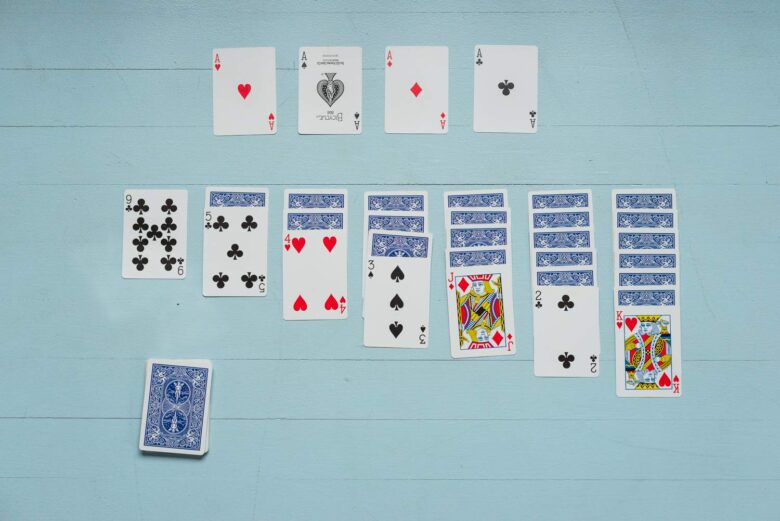How to Beat Klondike Solitaire Every Time: Tips & Strategies for Gamers

Klondike Solitaire, often simply referred to as Solitaire, is a popular card game that combines elements of luck and strategy. While it’s impossible to win every game due to the nature of card shuffling, certain strategies can significantly increase your chances of success. In this article, we will explore some key strategies that can help you become a more proficient Klondike Solitaire player.
Understanding the Basics
Before diving into advanced strategies, it’s crucial to have a firm grasp of the basic rules and objectives of Klondike Mobile Solitaire. The game is played with a standard deck of 52 cards. The goal is to move all cards to four foundation piles, each representing a suit, in ascending order from Ace to King. The game board consists of seven tableau columns with overlapping cards and a stockpile for drawing extra cards.
Strategy Over Luck

While luck plays a role in Klondike Solitaire, strategy is the key to consistently winning. It involves making the right moves at the right time and always thinking a few steps ahead. A good strategy can often turn a seemingly hopeless game around.
Expose Larger Stacks First
When starting a game, prioritize moves that expose larger stacks of face-down cards in the tableau. This increases your chances of revealing useful cards and creates more options for future moves. It’s better to play from the tableau than the stockpile whenever possible.
King Spaces are Gold
Empty tableau spaces can only be filled with Kings. If you have a choice, consider moving a King to an empty space, especially if it uncovers other cards. However, be strategic about this; moving a King without a plan can block other potential moves.
Turn Over Stockpile Cards

Regularly turning over cards from the stockpile increases your options. However, be mindful of how you cycle through the stockpile. In some variations, you can only go through the stockpile a limited number of times, so each pass is crucial.
Use the Undo Button
If you’re playing a digital version of Klondike Solitaire, don’t be afraid to use the undo button. It allows you to take back moves and try different strategies. This is a great way to learn from mistakes and understand the consequences of different actions.
Foundation Piles
Don’t rush to move cards to the foundation piles. Sometimes, it’s better to keep cards in the tableau for more maneuverability. Only move cards to the foundation when it either exposes new cards or doesn’t block other important moves.
Color Alternation is Key
When arranging cards in the tableau, alternate colors. This creates opportunities to move sequential cards around and expose hidden cards. Color alternation is a fundamental aspect of the game’s strategy.
Sequencing and Building

Plan your moves in a way that creates sequences. If you can build a descending sequence of alternating colors in the tableau, it gives you more options to maneuver. Also, remember that sequences can be moved together, not just individual cards.
Practice and Patience
Finally, the most underrated strategy is practice and patience. The more you play, the better you’ll understand the nuances of the game. Patience is crucial; sometimes the best move is to wait and see how the game unfolds before committing to a specific strategy.
Timing the Stockpile
One aspect often overlooked by novice players is the timing of stockpile moves. It’s not just about flipping the cards; it’s about knowing when to flip them. If you have a choice between a move on the tableau and a stockpile flip, evaluate which option opens more possibilities. Sometimes, delaying a stockpile flip can be beneficial if it allows for a more strategic tableau arrangement.
Maximizing Moves
Each move in Klondike Solitaire should ideally serve multiple purposes. For instance, moving a card from the tableau not only progresses that stack but can also open up a slot for a King, reveal a hidden card, or allow a stockpile card to be played. Think of moves in terms of their cascading effects and try to maximize the benefit of each action.
Managing the Foundation Piles

While the ultimate goal is to build up the foundation piles, premature moves here can limit your options. A common mistake is to rush cards up without considering their utility in the tableau. For example, a low card like a 2 or 3 might be more useful in creating sequences in the tableau than sending it straight to the foundation.
Balancing Short-term and Long-term Goals
Klondike Solitaire requires balancing immediate needs with long-term strategy. Sometimes, the best move for the current situation might hinder your progress later in the game. Always consider how your moves affect future possibilities. For instance, it might be tempting to clear a tableau column immediately, but if it doesn’t help in the longer term, it might not be the best choice.
Adaptability
No two games of Klondike Solitaire are the same. Therefore, adaptability is key. What worked in one game may not work in another. Be prepared to adjust your strategies based on the current layout of cards. This flexibility in thinking is what separates experienced players from novices.
Learning from Klondike Solitaire Losses
Finally, understand that not every game is winnable. Instead of getting frustrated with losses, use them as learning opportunities. Analyze your moves and see if there were alternative strategies that could have led to a better outcome. This reflective practice will improve your skills over time.
Summary
Klondike Solitaire is a game that challenges both your strategic thinking and adaptability. By following these tips – understanding the basics, focusing on strategy, carefully managing the tableau and stockpile, maximizing each move, balancing short-term and long-term goals, and learning from losses – you can greatly improve your chances of winning. Remember, each game is a new puzzle to solve, and with practice and patience, you’ll find yourself mastering Klondike Solitaire in no time.